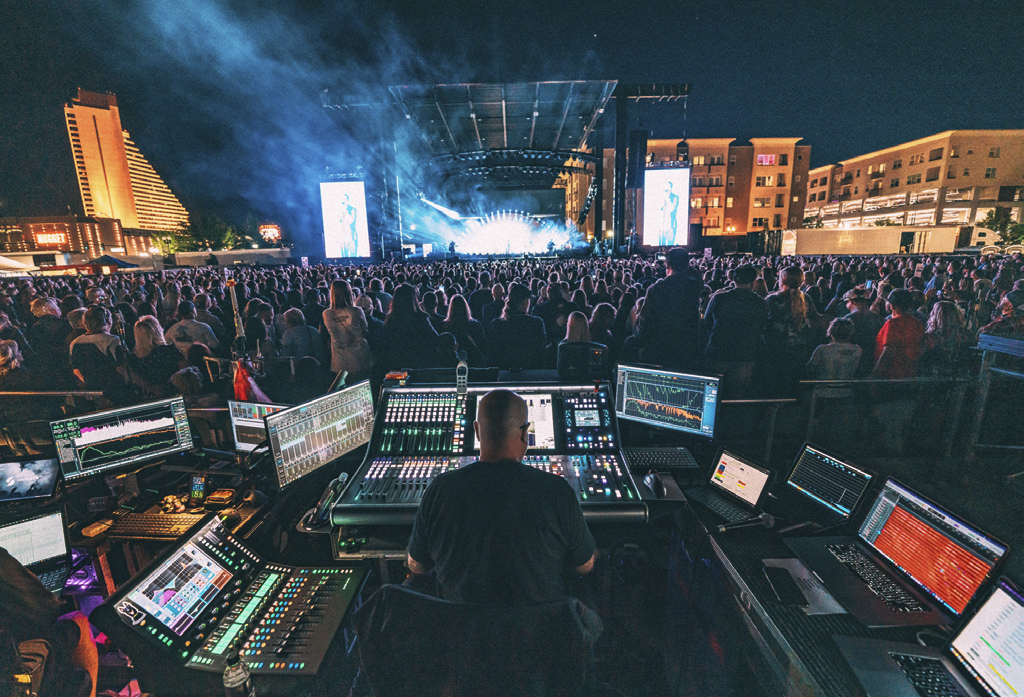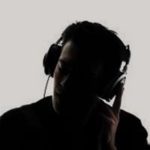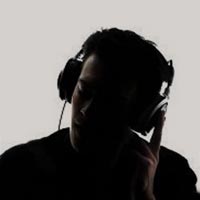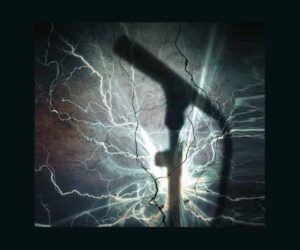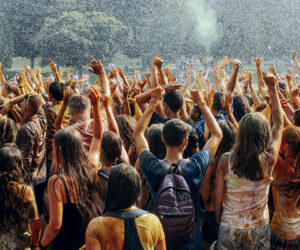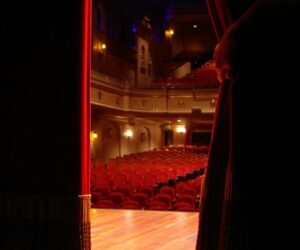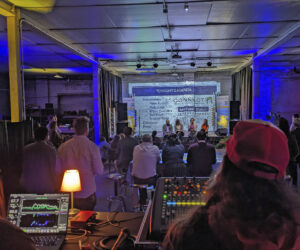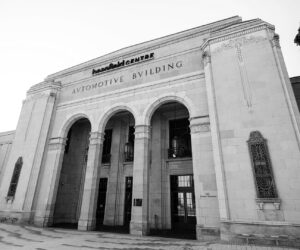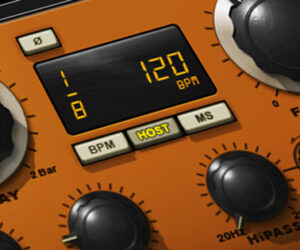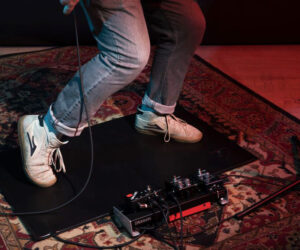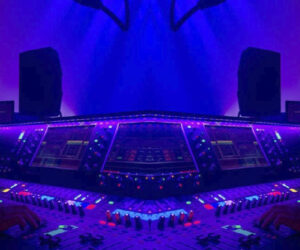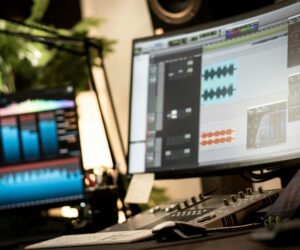In more than a casual sense, Matchbox 20’s 2023 Slow Dream Tour represents the realization of the band’s 2020 tour, which was postponed three times over the past three years, in no small part because of the pandemic.
Along with the release of its first new album in more than a decade – Where the Light Goes – the band has taken to the road, crisscrossing North America from the Rogers Arena in Vancouver, B.C. to the Hurricane Heroes Concert in Fort Myers, Florida on October 7, all this prior to a scheduled departure for Australian stages in the early part of next year.
Bringing audio to life for the show, a six-member crew possessed of multiple skill sets rides herd over an L-Acoustics-based rig providing the requisite flexibility to tame venues as diverse as arenas seating 19,000 and sheds with a capacity of 6,000. With Montreal-based Solotech’s Nashville office chosen to deliver all of the components responsible for the show’s sound, the system’s mains comprise a half-dozen of L-Acoustic’s K1 cabinets over 12 K2s per side.
“This rig strikes a really good balance for us,” system engineer Ben Malone, a full-time employee of Solotech, told me just prior to a show in July at the PNC Music Pavilion in Charlotte, NC. “Especially in the venues where we don’t have a lot of trim height to work with. Five years ago I did a tour that hit a lot of the same venues we’re finding ourselves in now with a dozen K1s and four K2s per side in the mains and it worked great, but this time I’ve found that with the smaller rig we can still cover things quite well while adapting with greater speed to whatever conditions we find ourselves in. We’re maintaining great tonal balance across the board, and not having to make drastic adjustments to the array’s bottom zoning groups in order to keep from taking people’s faces off in the first few rows.”

Keeping It Consistent
Since the band’s early days in 1995, Matchbox 20’s sound has evolved and matured while consistently remaining true to the core elements it was built upon. Today, the set list’s sonic palette imbues songs such as “Friends,” “She’s So Mean,” “Rebels,” and encore numbers that include a cover of Simple Minds’ “Don’t You (Forget About Me),” with a rich, newly-forged tapestry of tones, controlled pitch, and timbre that are deeply and intrinsically musical.
“Amidst the natural evolution of their sound over the years, one thing that has helped retain consistency is the fact they are always the sole creators of their music,” Malone says. “The K Series components we’re using are ideal for this application in that they are content agnostic. They can effortlessly reproduce the heaviest music on the planet – like EDM or metal – and do an equally phenomenal job here, or even with high-culture pop, orchestral, and symphonic music.”
Flown subwoofers in the form of eight L-Acoustics KS28s per side provide the majority of the low-frequency extension for the rig, supplemented only by four ground-dwelling KS28 brethren picking up fill front and center. Side hangs utilize 14 K3 enclosures each, while eight X8 boxes provide frontfill, four ARCS FOCUS enclosures stand-in for stage corner infill, and four ARCS II cabinets provide stage corner outfill.

The rig is smaller than the last time Malone was out traveling through these parts, and there are other changes afoot as well. “We’re doing all console switching and system drive with three L-Acoustics P1 processors that drive the PA over AVB with analog fallback,” he notes. “New to myself and Solotech is to be doing a full tour using L-Acoustics M1 as the primary system alignment and tuning platform. I’ve been very impressed with the suite within LA Network Manager, it’s allowed me to tune the PA at times when it may not have been previously possible, such as during a weather hold during the day.”
Times have changed in other ways as well. In stereotypical days of yore cynical, jaded roadies relied on brawn to lift arrays like this skyward. On this tour, however, we find Nikki Berna (stage left PA tech) and Emily Pikul (stage right PA tech) using both brains and strength to manage their respective tasks.
Like Pikul, Berna hails from Illinois. Following a dream and a path of formal education (Pikul via earning a mechanical engineering degree at Iowa State University plus a Master of Science degree in audio engineering at Nashville’s Belmont University, and Berna earning a Bachelor of Science degree from Full Sail University in show production), both women are known for their efficiency, constant concern for safety, and speed at getting things done.

“It’s like adult Jenga,” Berna says of her PA-building duties, comparing it to a large-scale version of the stacking game played with wooden blocks. “And a lot more stable. Nothing can fall here, safety is my paramount concern. We have tools for everything. I use motors to do all the work, and tell my stagehands that we aren’t going to break our backs, we’re going to let the tools at hand do their jobs. This rig goes up quick, and anything I have the stagehands doing I also do myself.”
Pikul – who met Jim Yakabuski, the tour’s front of house engineer, at Belmont University, where he teaches a live mixing class as an adjunct professor – finds the feat of getting thousands of pounds of gear airborne every day both challenging and rewarding. “There is a feeling of accomplishment when you’re done,” she says. “And then when you realize that the incredible sound coming out of the system is part of your handiwork, it gets even better. It’s always been a dream of mine to be doing this, even though it’s never easy.”
A Driving Force
Yakabuski has been out in the house for Matchbox 20 since 2003 when his predecessor, Robert Scovill, handed over the seat when he went out to work full-time with Tom Petty.
“When I first came here,” Yakabuski recalls, “the guitar sounds were fantastic and a driving force within the mix. There were a lot of tonal changes from verse to chorus, to bridge – and each of the two guitars was so different and varied that the band spent a lot of time in rehearsals simply programming things. They had these little iso cabinets with a single 12-inch speaker inside, and then each of the guitarists had a small digital console that allowed them to change their EQ and presets right before the iso boxes.
“These guys have always been very technically advanced,” he continues. “Today we have Paul Doucette, who’s playing at house right through a Fractal system, taking total control over his rig that way. The lead guitarist, Kyle Cook, does everything through pedals and amps. He has four different amplifiers going into a Palmer speaker simulator. The sound is still exceptionally varied, the biggest challenge is getting it right before you leave rehearsals. Some of the tones are more modern and updated now as the music has become more polished, but technically things are still as complicated as when the band’s first record came out.”

Yakabuski manages his end of the equation from behind an SSL L550 with a trio of ML 32.32 I/O racks providing inputs and a split to monitor world plus a backup front of house mixer, which is an Allen & Heath CTi 1500 control surface working in lockstep with a DM0 rack. An extensive Waves SoundGrid setup is kept at hand for virtual sound check duty, some specific plugin processing, and recording at 96 kHz using Logic Pro software. In addition, a main and backup MP3 recording is captured every night using a pair of TASCAM SSD recorders.
A pair of Bricasti M7 reverbs are also part of Yak’s package, deployed on frontman Rob Thomas’ vocals as well as on drums to provide a 1.5-second hall sound. Lake LM 44s bring added complement to the mix as matrix inserts.
The show is essentially mixed via the VCAs. There is but one track that is heard as part of the intro prior to the band’s appearance onstage. “I’m not a studio guy,” Yak explains. “I’m a live guy, so my mixes sound live – I don’t try to capture the exact sound of the albums. My mix comes out very untouched, I don’t do a lot of polishing of anything, because that wouldn’t be an honest representation of how this band naturally sounds.
“One thing I did was spend some time in rehearsals building routing for the guitars so that I can go instantly from 9 o’clock/3 o’clock panning back into full stereo mode on another VCA. The structure of the songs is super wide and massive sounding on the guitars, and oftentimes they need to be panned left and right to provide the audience with the proper interaction between the two.”
He set out purposely to use snapshots on this show, but ultimately wound up using none. “I set aside time during rehearsals to build some snapshots, and then when they concluded I found that I didn’t have anything that required them. I was just doing a couple mutes, tap delays on my effects, and it was all good.”
Moving Faders
In monitor world, however, snapshots are the rule, not the exception for Eddie “El Brujo” Caipo, who works from behind an Avid VENUE S6L with an E6L-192 engine using Avid Stage64 and Stage32 I/O racks.
“Jim and I both love mixing the band, but we always joke about how different our methods are,” he says. “Some songs have two or four snapshots, the main ones are for the songs themselves and the others are for changes in the mix balances for each of the musicicans at any moment within a song. Within one song, “She’s So Mean,” a band member may want their vocal to be panned to the left or the right, or brought up, and then maybe have a low-fi AM radio effect added as it progresses.

“Because there is no playback in this show, by default there is no time code either, so I have to program all my automation and save it as a snapshot or momentary snapshot. I mix Rob Thomas totally live: effects, guitar solos, little prominent licks, turning up the drums for a chorus, everything. It’s like I’m mixing for the house or a record, I’m constantly moving faders for him.”
Caipo’s plugin processing consists of McDSP, Plugin Alliance, Empirical Labs, and Soothe running natively; his Waves plugins are managed by a redundant Waves Extreme Server-C X10 system. He integrates ProTools within a virtual sound check/recording (96 kHz) rig.
Eight channels of Shure Axient Digital RF are at hand for both vocal and instrument wireless that includes ADX2 handheld transmitters. Thomas uses a Shure KSM9 capsule, a choice Caipo says “sounds good for him – he likes to dig in and has a real strong voice. The KSM9 is simply well-suited for the purpose.” In total, there are 14 mixes of Shure PSM 1000, plus two hardwired mixes using Shure P6HW and P9HW bodypack receivers.
Challenging Locations
RF coordination on the tour falls under the guidance of monitor tech Stephanie van Ravensway, who has also stepped in a few times to mix monitors when Caipo was called away for by his long-time client Enrique Iglesias. Noting that the RF environment is getting worse and worse with each passing year, Dallas and Phoenix were the most challenging for her this year as of mid-July.

“You have to come up with creative solutions every day and think outside the box,” she states. “We have backups built-in to our rig, and have padded our inventory with more backups utilizing band diversity. Our ears are in G10, but we carry a few channels of ears in a different band that don’t overlap just in case. RF planning before you even build your rig is more crucial than ever. Do your homework in advance, reference available scans from public databases, and know what you’re going to encounter before you get there.”
She starts her day onstage with a Signal Hound using Spike spectrum analyzer software to gather readings. After verifying her findings with Shure’s AXT600 spectrum manager, her scans are fed into Shure Wireless Workbench 6, where she uses a template for the tour that includes her entire wireless inventory. In conjunction with Wireless Workbench 6, she then calculates and coordinates the inventory for use based upon the criteria given by the scans. In total, there are 53 channels to coordinate that include backups, IEMs, backline wireless, wireless mics, and wireless reference mics.
“By the end of sound check we have it worked out and solid,” van Ravensway notes. “But you can never let down your guard. I’ll scan the environment throughout the day to see if TV channels have changed or increased power. Sometimes members of the press come in with wireless transmitters we don’t know about, or we are adjacent to another facility where interfering devices suddenly pop up out of nowhere. You are never totally isolated.”
The tour will wind its way to a penultimate stop in the U.S. on August 6 at the Credit Union 1 Amphitheatre in Tinley Park, IL. The current leg concludes on October 7 in Fort Myers and will resume in February 2024 in Perth, Australia.

“It’s a one-team effort from Solotech on up,” Yakabuski adds on a parting note, commenting on the camaraderie and esprit de corps among the crew. “We all share a high degree of love and respect for one another, as well as an enthusiasm and devotion to the work in front of us.
“The band and the environment they create around them couldn’t be better, everything combines in a fashion that unifies and brings the best out in us all every night. Everyone brings their A-game to the effort, and it shows. I can’t tell you how lucky we all are to be here.”

